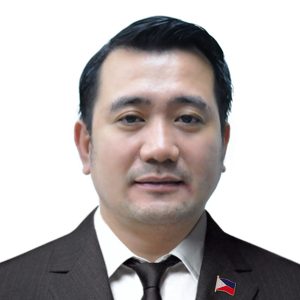
I HAD the privilege to share about the Brunei-Indonesia-Malaysia-Philippines East ASEAN Growth Area to a hundred young researchers, academics, and professionals in the recently held 1st Regional Research Conference on recent issues and trends on July 18, via Zoom hosted by the Institute of Economy and Enterprise Studies (IEES), University of Mindanao, Davao.
As one of the keynote speakers, I shared the virtual floor with Dr. Gil Dureza of the Board of Investments (BOI) and the renowned Sass Rogando Sassot of SMNI.
Allow me to share some points here. It comes timely given that the senior officials of the sub-regional cooperation gather face-to-face in Manila to review the BIMP-EAGA Vision 2025.
I must also credit Mr. Ahmed Datukan of the International Relations Division (IRD) of MinDA for preparing the materials and providing the essential information.
The Mindanao Development Authority (MinDA), created under the Republic Act 9996 in 2010, is mandated to coordinate, harmonize and integrate projects for inclusive Mindanao growth.
MinDA also serves as the Philippine Coordinating Office (PCOBE) for the BIMP-EAGA, ensuring the active participation of Mindanao and Palawan in the sub-regional economic cooperation.
To this, MinDA is the permanent agency tasked with strengthening the participation of Philippine focus areas, Mindanao and Palawan, in the BIMP-EAGA.
The impetus for creating the BIMP-EAGA started when President Fidel V. Ramos presented an agenda during the high-level talks with the Head of State of Brunei, Malaysia, and Indonesia in 1992.
The BIMP-EAGA’s first senior officials’ and ministers’ meeting was two years later in Davao City.
The officials galvanized the objective of the sub-regional cooperation to bolster trade growth, expansion of investments, and tourism through intra-region shipping routes, air connectivity, and power sector interconnection.
The BIMP-EAGA covers the whole Sultanate of Brunei Darussalam, nine provinces of Kalimantan, Sulawesi, Malaku island, and Papua in Indonesia, Sabah, and Sarawak, and the federal territory of Labuan in Malaysia, the 27 provinces of Mindanao and the province of Palawan.
As a strategic economic approach, the BIMP-EAGA is organized into economic corridors. The economic corridors are West Borneo Economic Corridor (WBEC), the Mindanao Development Corridors (MinDC), and the Greater Sulu Sulawesi Corridor (GSSC).
In addition, the BIMP-EAGA concentrates on the strategic pillars of connectivity, food basket, tourism development, environment, and socio-cultural and education.
Over the years, there have been observable efforts for sustainable trade, investment, and economic linkages. These projects take reference to the geographical proximity, historical affinity, shared culture and heritage of member countries, and the mutual objective towards prosperity.
The Davao-GenSan-Bitung (DGB) sea connectivity, which route has existed informally for centuries for the barter trade, is pursued to provide connectivity for Mindanao and North Sulawesi in Indonesia.
The route has seen several interested operators since 2017, one of which is the Reefer Filipinas.
A trial run was done on July 12, 2019, via Labuan, Malaysia, and Bitung, Indonesia, transporting sugar, construction materials, and trade samples, including halal food, desiccated coconut, and corn, but the pandemic overtook the trade activities.
There is also the Davao-Manado air connectivity. On September 27, 2019, Garuda Indonesia revived the route with the flight of ATR-72 aircraft.
Interests are coming from Philippine Airlines (PAL) to service the Davao-Manado route soon.
Another possibility of connectivity is Davao-Manado-Denpasar (Bali). This link is mainly aimed at encouraging people’s movement for tourism in the areas of Denpasar in Indonesia to Davao and the rest of Mindanao and the Palawan. Mindanao is expected to take a share of the Australian surfing market of Bali as Siargao tourism is returning to its thriving state after Odette.
MinDA has facilitated the preparations for the service with the transport, the CIQS (customs, immigration, quarantine, and security), and other relevant arrangements for the connectivity.
With Secretary Maria Belen S. Acosta’s vision of creating a more vibrant business community to recover from the pandemic, MinDA regularly hosts business-to-business matchings, investment, and trade missions to fill the passenger and cargo requirements of the routes and, expand the business activities spanning the whole sub-region.
Adrian Tamayo is the head of the Public Relations of the Mindanao Development Authority (MinDA). He teaches economics at the Graduate School of the University of Mindanao and currently on a scholarship grant for a Master of Public Safety Administration (MPSA) at the Philippine Public Safety College (PPSC).


